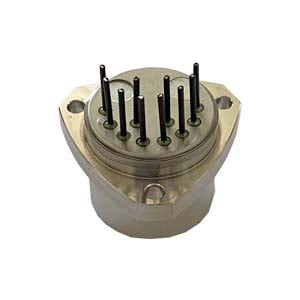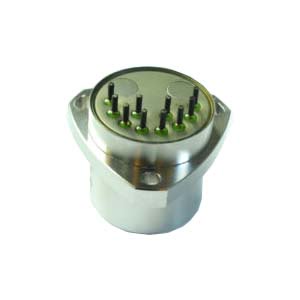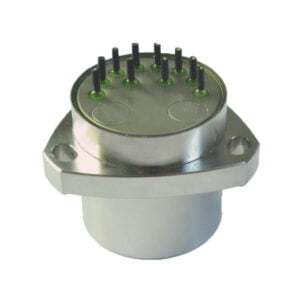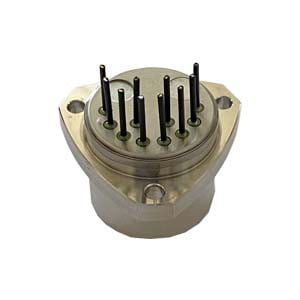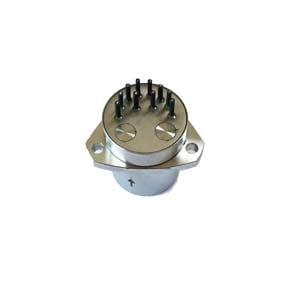Quartz accelerometer is an inertial navigation device that uses Newton's second law (Law of inertia) to measure acceleration, and is widely used in aerospace, aviation, navigation, transportation, oil and other fields. Because of its simple structure, small size, high precision and sensitivity, good stability, low power consumption, low cost, it is more widely used in the space field of missiles and launch vehicles. From the perspective of various models, the long-term stability of quartz accelerometers has also become a bottleneck restricting the development of inertial systems. Therefore, this paper will briefly introduce how to improve the long-term stability of quartz accelerometer from the following points.
1.Factors affecting long-term stability
1.1Influence factors of partial value
It can be seen from the important indexes that affect the stability of the quartz accelerometer that the size of the offset value and the long-term stability play an important role in its accuracy. For example, the bias of ER-QA-03A1 is 3mg, and the bias repeatability is 10μg, which has the attribute characteristics of high precision. According to the main reasons affecting the occurrence of bias, in the current technical state, according to the quartz accelerometer error model, the main reasons affecting the stability of the offset value are the zero change of the differential capacitance sensor (the size drift of the support structure) and the change of the elastic recovery Angle of the pendulum plate beam (the slow release of the processing stress and the structural stress), which cause the direct cause of the offset error.
1.2Scale factor influencing factors
Calculation formula of scale factor K1: K1=P/KT=mL/ BlL
It can be seen from the formula that the stability of the scale factor is determined by the torque coefficient and the pendulum property. Further analysis is determined by the stability of the detection mass m, the working air gap magnetic induction intensity B, the effective length of the coil wire l, the distance from the detection mass center of mass to the pivot L and the distance from the electromagnetic force center to the pivot L. The change of the performance of the pendulum component and the instability of the scale factor of the torquer are the main reasons leading to the change of the accelerometer factor stability, that is, increasing the scale factor stability of the torquer can improve the scale factor stability of the accelerometer.
2.Concrete measures for long-term stability
2.1Application of new high performance permanent magnets
The role of a permanent magnet is providing the magnetic induction in the formula. Theoretically, as long as the mass, length and magnetic induction intensity do not change, the current value can accurately calibrate the acceleration value. However, in general, the magnetic properties of permanent magnets change with temperature and time. The change of temperature directly determines the accuracy parameters of the accelerometer, and the drift of time directly limits the stability parameters of the accelerometer. Therefore, temperature and time are the two most important factors restricting the application of accelerometers. Under the premise of ensuring the remanent temperature coefficient, the coercive force temperature coefficient is also more than one order of magnitude lower than that of traditional magnets, which can effectively reduce the magnetic field drift caused by the fluctuation of coercive force field, and the magnetic field will show better temperature stability and time stability, which is expected to ensure the long-term stable use of quartz accelerometers in variable temperature environments.
2.2Temperature compensation technique
Temperature is an important aspect that affects the accuracy of quartz accelerometer. The fluctuation of the operating temperature inside the inertial device and the thermal gradient around the shell will cause errors. The thermal expansion and cold contraction of the material will deform the structural parts of the accelerometer and cause interference torque to the accelerometer. Temperature changes will also change the physical parameters of various materials inside the device, and the change of magnetic properties of the torquer will also directly affect the measurement accuracy of the accelerometer, so the accuracy of the accelerometer can be improved through magnetic temperature compensation. At present, the products represented by ER-QA-01A3 have applied this technology to ensure its accuracy in long-term use.
Through the analysis of the factors affecting the long-term stability of the quartz accelerometer, it is realized that its stability is closely related to the energy of the pendulum material and the magnetic field stability of the torquer. The long-term stability is improved by using new high performance permanent magnets and temperature compensation technology.
More Technical Questions
1.What is the Effect of Temperature Coefficient on Quartz Accelerometer?
2.What are the Advantages and Disadvantages of Quartz Accelerometers?
3.What is Sensitivity and Measurement Range in Quartz Accelerometer?
4.Quartz Accelerometer VS MEMS Accelerometer
5.Why do we Need Accelerometer?
6.What is the Purpose of the Accelerometer Senor?
Products in Article

